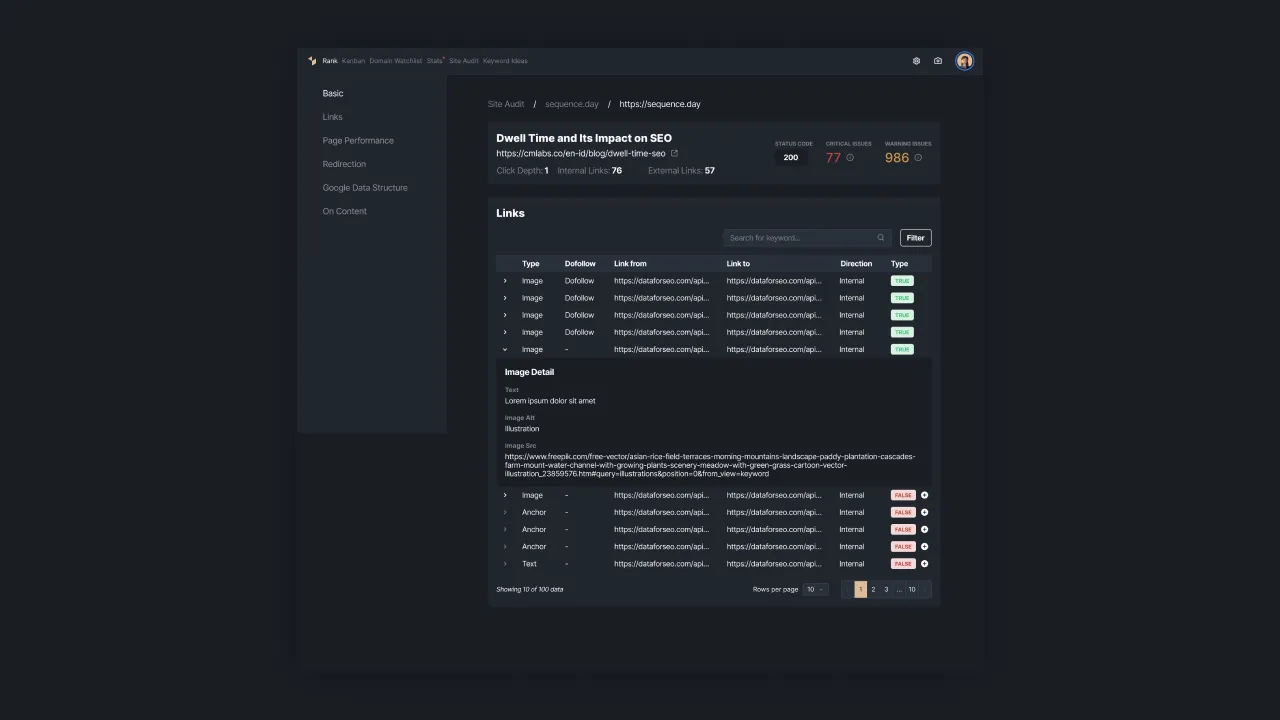White Label SEO Audit: What Is It and How It Works
Since SEO is a complex game, you have to equip your site with advanced white label SEO audit. This is done to make sure that you can detect any issue at an early stage. Thus, nothing can be toxic that can harm your site's performance.
This article will walk you through the intricacies of SEO audits, from the essential metrics to the tools and strategies that power them. Read thoroughly for the explanation.
What Is White Label SEO Audit?
To put it simply, it's a comprehensive examination and evaluation of a website's SEO performance conducted by professionals in the field. The term "white label" implies that this analysis can be rebranded and offered as a service by digital marketing agencies under their own brand names.
It's an outsourcing strategy that enables agencies to provide top-notch SEO audit services without the need to build an in-house team of SEO experts.
The Process of Conducting a White-Label SEO Audit
The white label SEO audit process is no different from the regular audit, however, it makes sure that everything done is in compliance with search engine regulations. So, here is the process.
1. Preparing for the Audit
Before starting a White Label SEO Audit, meticulous preparation is essential. This initial phase sets the stage for a comprehensive and effective examination of a website's SEO performance. here is what you need to prepare:
- Client Information: This includes gaining a profound understanding of the client's business, industry, and specific goals. It's essential to establish open lines of communication with the client to gather insights into their expectations and pain points.
- Current SEO Efforts: Investigate the client's current SEO strategies and efforts, if any. Identify the tactics they've employed in the past and their outcomes. This insight helps in pinpointing areas that require improvement and building upon existing successes.
2. Setting Goals and Objectives
Once a comprehensive understanding of the client's business and existing SEO efforts is acquired, the next step is to set clear and achievable goals and objectives for the audit. These goals will guide the audit process and ensure that it remains aligned with the client's overarching digital marketing strategy.
3. Choosing The White-Label SEO Audit Tool
Before embarking on the audit journey, it's essential to equip yourself with the right tool. The choice of a White-Label SEO Audit tool will significantly impact the depth and precision of your analysis. You can use Sequence Stats for your agency needs on Site Audit.
This tool can be used to do various SEO tasks including comprehensive site audits. So, we will see how this tool is used in the following steps. Read how to perform a site audit with Sequence Stats to start it.
4. Technical SEO Analysis
Start the audit with technical SEO analysis since the technical issue is the main problem that can hamper the optimization process. So, make sure the following metric is issue-free on your site:
- Website Structure and Architecture: This aspect of the audit assesses factors like URL structure, navigation, and internal linking to ensure search engine crawlers can easily navigate and index the site.
- Page Speed and Performance: A technical SEO analysis evaluates load times and performance, identifying bottlenecks and opportunities for optimization to enhance user experience and search engine ranking.
- Mobile-Friendliness: The audit includes an examination of responsive design, mobile optimization, and user-friendliness on various devices.
 |
|---|
| Picture 1: Site Audit on the Technical side of the website using Sequence Stats. |
5. On-Page SEO Analysis
After auditing the technical side, proceed to the on-page analysis. This is done to make sure there is no internal element issue that can harm the website's performance in terms of SEO. look at these elements:
- Keyword Analysis and Optimization: This part of the audit involves assessing keyword selection, placement, and optimization throughout the website's content to improve its visibility in search engine results pages (SERPs).
- Content Quality and Relevance: The audit evaluates the website's content for its quality, relevance, and alignment with user intent and industry standards.
- Meta Tags and Headings: This aspect of the audit examines title tags, meta descriptions, and heading tags for optimization opportunities.
 |
|---|
| Picture 2: On-content result in Sequence Stats Site Audit. |
6. Off-Page SEO Analysis
The last important thing to audit is the website backlink. You need to make sure that it is relevant and coming from a reputable website. So, run your audit to asses these things:
- Backlink Profile Assessment: Backlinks are a cornerstone of off-page SEO. The audit scrutinizes the website's backlink profile, assessing the quality, quantity, and relevance of incoming links. It identifies toxic backlinks that may be harming the site's SEO.
- Social Signals and Online Reputation: Online presence extends beyond the website. The audit explores the website's social signals, online reputation, and mentions across digital platforms, assessing their impact on SEO.
 |
|---|
| Picture 3: Link audit result from Sequence Stats. |
Conclusion
That’s everything! You have the white-label SEO audit in your hands and are ready to start yours with Sequence Stats. In essence, a White Label SEO Audit is a holistic examination of a website's SEO performance. It encompasses technical, on-page, and off-page aspects, ensuring that all facets of SEO are optimized for improved search engine rankings, user experience, and digital success.
Register to Sequence Stats to start exploring all its features and ready to run your agency to the next level!